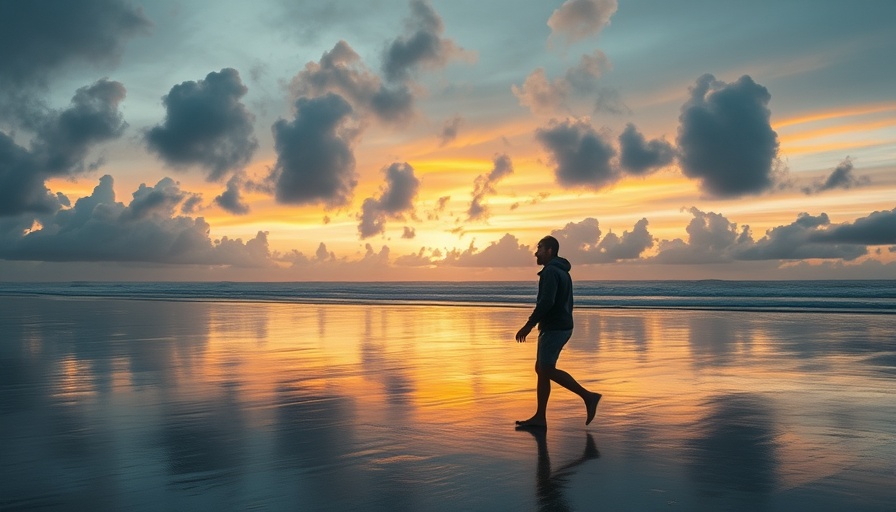
Rip Currents Rattle Southern California Beaches: Stay Safe This Summer
This weekend, the breathtaking coastline of Southern California is not without its threats as dangerous rip currents pose risks to beach-goers across the region. Meteorologists have reported that the surf will reach heights of four to six feet, with potential sets peaking at seven feet. While the sun is shining and the beach beckons, safety must remain a priority for all.
Understanding Rip Currents: The Ocean’s Hidden Dangers
Rip currents can be deceptively inviting with their calmer, deeper waters that often conceal their dangers. Chandler Price, a meteorologist at the National Weather Service in San Diego, explains, "Rip currents are sort of the opposite of waves in that waves are energy going into the beach, and rip currents are the energy going back out into the ocean." This phenomenon becomes even more pronounced when larger waves are present, resulting in stronger and more treacherous currents that can sweep unsuspecting swimmers off their feet.
Visually, rip currents can appear as darker, sediment-laden patches in the water. With the National Weather Service issuing Beach Hazard Statements for counties like Ventura and Los Angeles due to increased southerly swells fueled by a distant hurricane, the threat escalates. Meteorologist Kristan Lund confirmed that while the storm has passed, the rip current effects will linger, reminding beach-goers to proceed with caution.
Recent Incidents: A Wake-Up Call for Beach Safety
Over the Fourth of July weekend, lifeguards weren't just on alert; they were in action. Newport Beach alone recorded over 350 rescues, with reports stating that lifeguards dragged 10 swimmers from perilous conditions created by "monster rip currents" in just one day. Huntington Beach reported a similar story with 152 rescues attributed to the strong surf. Trevor McDonald, Marine Safety Division Chief, painted a grim picture of the ocean's unpredictability—"It was common to see large wave sets roll through, followed by multiple monster rip currents forming at once." This serves as a strong reminder that the ocean can be as dangerous as it is beautiful.
Crucial Safety Tips: How to Protect Yourself and Others
Being in the water can be thrilling, but knowing how to respond in dangerous conditions can save lives. Some essential safety recommendations include:
- Swim near a lifeguard: Always be aware of your surroundings and swim in designated areas supervised by lifeguards who can respond quickly if danger arises.
- Keep an eye on everyone in your group: Ensure that friends and family members are safe while enjoying the ocean.
- Stay hydrated: The beach can be deceivingly hot, and remaining hydrated is vital for both enjoyment and safety.
- Know the appearance of rip currents: Understanding what to look for—smooth, dark water with a difference from surrounding areas—is crucial.
- Learn how to escape a rip current: If caught, the key is to swim parallel to the shore to escape the current rather than swimming against it.
What to Do If You Get Caught in a Rip Current
Despite best efforts, being caught in a rip current can happen to anyone. Experts advise against panicking; instead, follow these steps:
- Stay calm: This is easier said than done, but conserving energy can help you escape.
- Swim parallel to shore: Avoid exhausting yourself by swimming directly toward the beach.
- After escaping the current, swim back to shore safely: Only when you have exited the rip current can you head back towards land.
Takeaway: Enjoy the Beach Responsibly
The beauty of Southern California beaches comes with its risks, particularly during high surf. With expert advice and awareness, you can enjoy every moment by respecting the ocean. Always keep in touch with local updates concerning weather and wave conditions. The ocean might call you to dive into its depths, but staying informed is key to a safe experience.
As you plan your next beach day, remember the incredible, yet unpredictable nature of the ocean. Make safety your priority and help keep others safe by sharing this knowledge. Our coastlines are treasures, and we must protect both ourselves and each other while we enjoy them.
 Add Row
Add Row  Add
Add 




Write A Comment